student voices
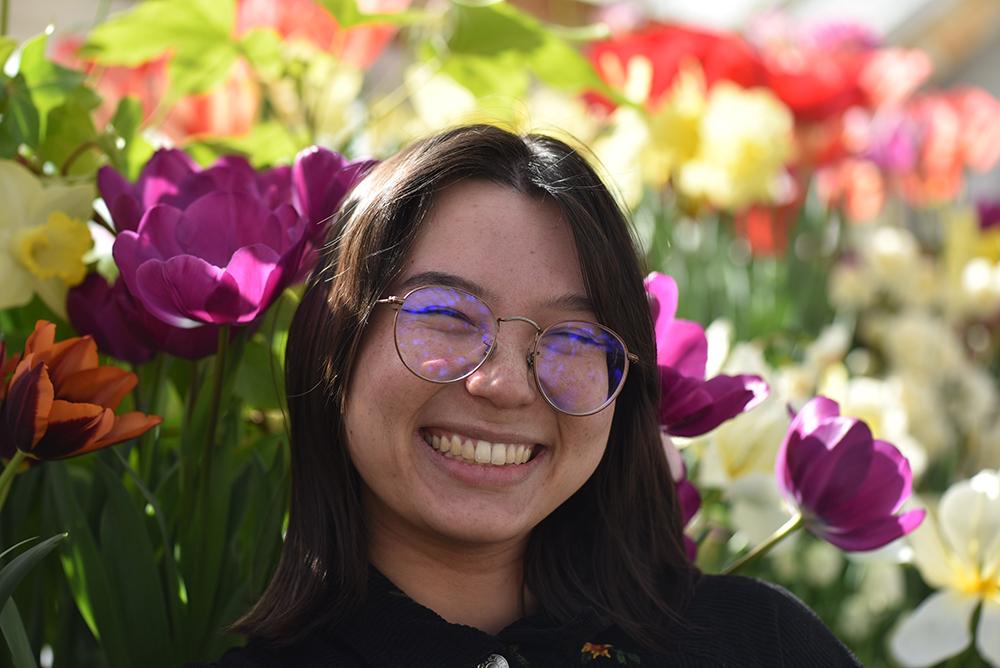
I have always been enamored with museums. I grew up going to art classes at my local children’s museum and went on to volunteer and later work at museums throughout high school. This trend followed me into college. Coming back to campus in the fall of 2022, after participating in the Smithsonian Study Away program, I knew I wanted to continue this work. This led me to apply to be the student Interpretation and Program Assistant to Nina C. Peláez, Associate Director of Learning and Interpretation.
Entering into this position was incredibly exciting. I spent the semester learning the inner workings of how to create, plan and execute programs for the museum; I participated in reinterpreting the museum’s collections; and I even interviewed a living artist. One reason I love working in museums is finding ways to connect people with the histories and objects around them; it was a joy to be a part of creating programs, especially for students. One highlight was collaborating with the Smith College Radio Station, WOZQ 91.9 FM. Together with WOZQ, we thought about how to produce an event that connected students with music in the galleries. Seeing this planning pay off was an amazing experience.
Working with Nina also got me involved with the museum’s collections through interpretive planning. I was a member of the project team for the reinstallation and reinterpretation of the museum’s third-floor collections gallery. I helped collect and organize visitor feedback and took part in planning conversations about the physical installation of works of art and interpretive elements with staff from the education, collections, curatorial and visitor experience departments. It has been an incredibly rewarding experience to be able to be a part of the planning and execution of projects throughout the museum, and I am excited to see the ways visitors, especially students, engage with these projects.
Maegan “Cloud” Osmond ’24 has been working at SCMA since January 2023. They came onto the SCMA team as the student Interpretation and Program Assistant, in which capacity they helped create and plan student programming and also worked on interpretation projects for the galleries. They graduated Smith in May 2024 with a BFA in art history and a concentration in museums and hope to continue working in the museum field post-graduation.
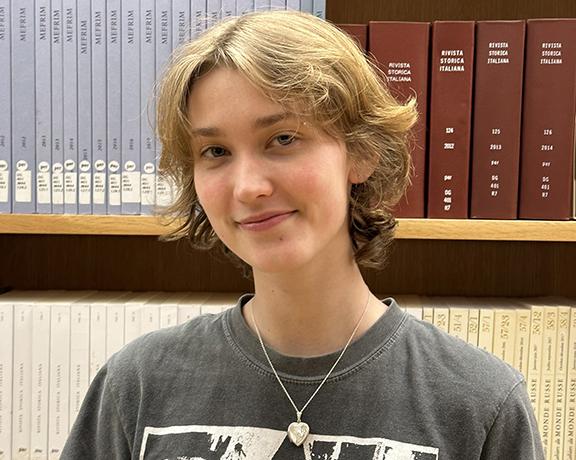
Since I began at Smith, I have been drawn to SCMA as a place to take a break from the stress of classes and explore a diverse selection of art. I was particularly excited when Isaac Julien’s work was displayed, as I am very inspired by the unique blend of fact and fiction in his iconic film Looking for Langston. I enjoyed writing about his film Lessons of the Hour for an art history class and hearing more about his work in his 2022 Miller Lecture. My experiences with SCMA programs like this one made me want to become more involved, and I began working as a student Communications Assistant to Tiffany Bradley in the marketing department during my sophomore year.
Since then I have had the opportunity to help document and promote programs, becoming a better artist myself as I practiced my photography and video skills in a practical way. I particularly enjoyed creating a video of the Guerrilla Girls art activism workshop in October 2023. It was amazing to see the activist campaigns that my peers came up with, and I enjoyed learning more about the iconic group’s creative process. In documenting this event, I explored the legacy of the Guerrilla Girls and the inspiration they provide to future generations of artists and activists. It was a great opportunity to practice my creative and technical skills while engaging with subject matter that I am passionate about.
The opportunity to document SCMA’s community engagement has allowed me to participate in a variety of student programs that demonstrate what an important presence SCMA is on this campus. I have photographed several Art After Hours events, where students can do arts and crafts, enjoy refreshments and explore the galleries. It has been rewarding to see how many students come to these events to de-stress and participate in community art making with their friends. I think showcasing these events through photography is a valuable way of demonstrating the importance of museums as spaces of community building and creativity.
Art has always been a big part of my life, and working at SCMA has allowed me to integrate this passion into my academic experience. I have learned a lot about what it takes to curate, promote, and document museum events, and I am continuously inspired by the unique and compelling way that exhibitions are curated at SCMA. I will be studying abroad in spring 2024, and will miss the space that SCMA has provided for me to engage with art and develop creatively. I look forward to returning to see the third-floor renovation and document more programs.
Jane Statchen ’25 is a film and media studies and sociology double major. She is a student assistant in the marketing and communications department at SCMA, creating digital and print promotional materials for museum events and exhibitions.
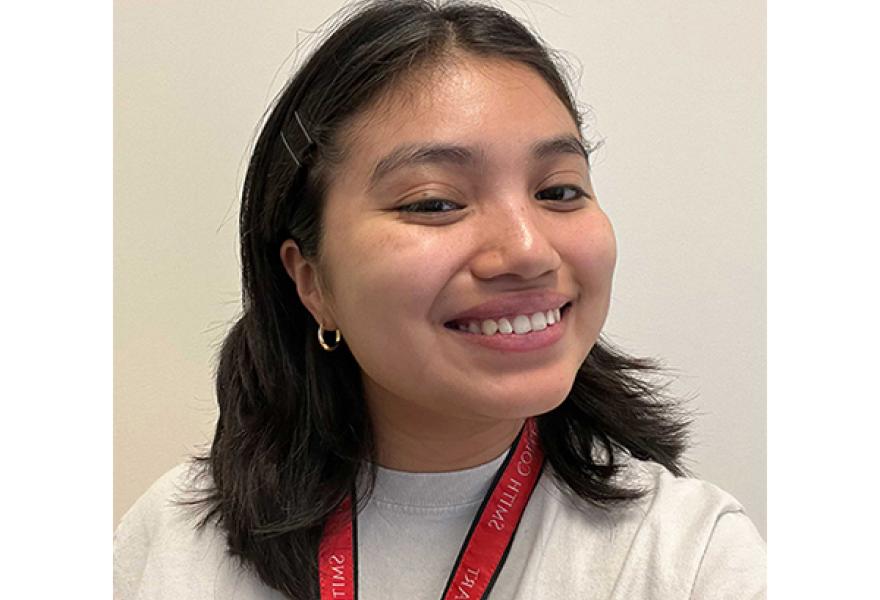
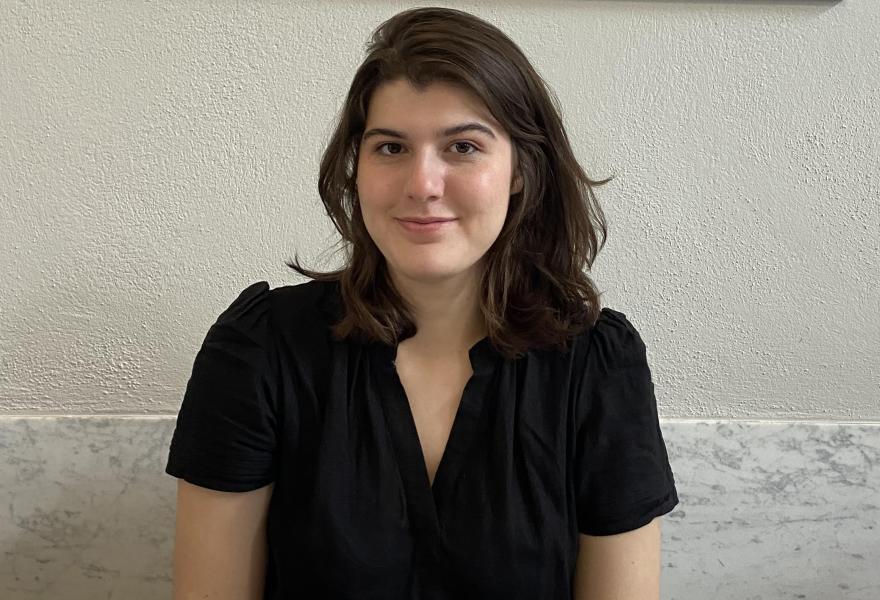
Valerie Olivares (VO): What exactly does a SME do as an ambassador of the museum and the college?
Olivia Peyev (OP): Student Museum Educators (SMEs) are paid educators who are trained to lead preK–12 students in looking at and thinking about art. As a SME, I plan and lead tours for preK–12 student groups, but I have also worked with toddlers and college students. When I go to work, I plan the tours for the week. For every tour, SMEs do an outline with the essential theme or goal of the visit, and we select works of art that will help us teach the students according to the theme. It’s so interesting to see how each group likes a different activity, whether that is poetry or movement activities.
VO: What have you learned from being a SME?
OP: I learned how important it is to be able to be flexible. While SMEs will plan for the tour, things will always happen that might change the initial plan. For example, students might be interested in seeing a different painting for a while, and we will definitely show them that painting. At the end of the day, we want students to explore their interests and have a good time.
VO: Do you work with any other departments at SCMA?
OP: Yes! SMEs work with other curators and students, such as 2021–2023 STRIDE Scholar Brooklyn Quallen ’25 and Kennedy Research Fellow in Art History Indigo Casais ’23, in case we need to know more about the artwork. For example, a few months ago, we worked with Yao Wu, Jane Chace Carroll Curator of Asian Art, on a tour for 7th grade students from the Pioneer Valley Chinese Immersion School. The SCMA collections management staff pulled out works of art in the Mellon Classroom for the kids to get a closer look and learn more about the history of the objects.
VO: What made you decide to apply to be a SME?
OP: In high school, I volunteered for a summer art camp for younger kids, and I liked seeing how the artwork made students feel happy, and I wanted to do a similar thing at Smith. I then saw that there was a Student Museum Educator position here at SCMA!
VO: Are the skills you’re learning as a SME transferrable to other jobs? If yes, how?
OP: I learned how to be more confident, because as a SME you can be speaking to up to 50 students. You need confidence to be able to communicate to different audiences, which I am still learning how to do. I also learned teamwork and organizational skills, because it is not just me working to make this all happen. I have to get the opinions of all my coworkers before we make a decision and compromise on something together.
VO: What advice would you give someone who might want to be a Student Museum Educator?
OP: Be open-minded and imaginative—art is very subjective—and be willing to keep the conversation going and have those meaningful conversations. What connects all the museum educators is ultimately our passion for art.
VO: What about this job surprised you the most?
OP: I was surprised by the level of care and thought that went into the tours. We really try our best to think about how each student learns differently. It's not just about teaching students; it's also about making students feel comfortable in the museum.
VO: Is there artwork on view you see students or visitors really enjoy?
OP: The little kids are drawn to the Viola Frey sculpture, Man in Abstract Suit, because he is so big and colorful. But most of them want to see all of the work.
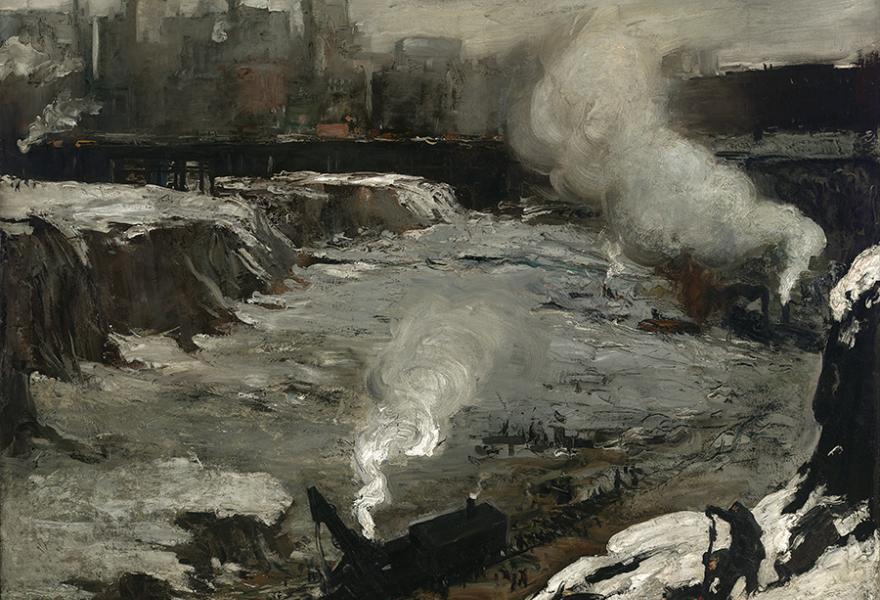
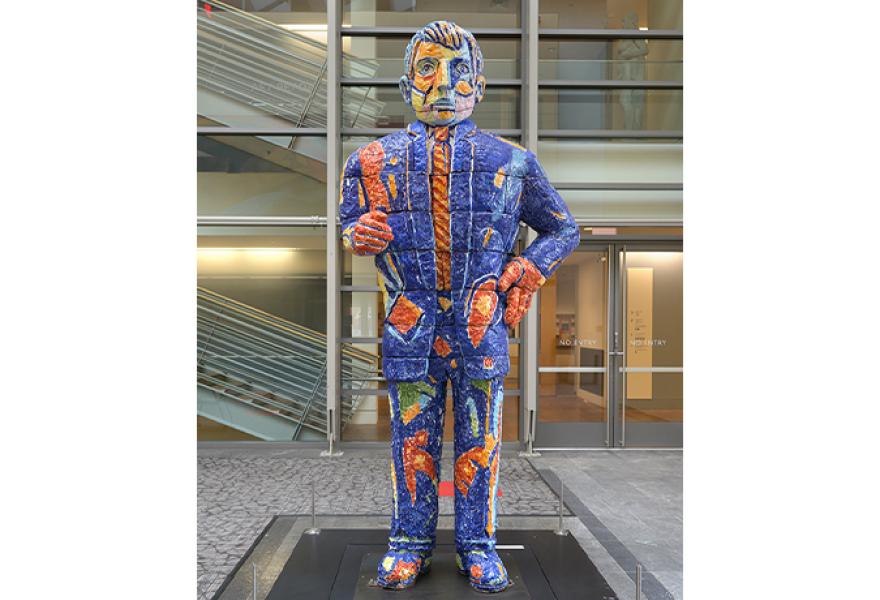
OP: Can you tell me what you do at the museum?
VO: As a Digital Communications Student Assistant, I help publicize and promote SCMA events. I do this by creating posts for the museum’s digital platforms and designing and distributing posters. My day-to-day can consist of scheduling online content, brainstorming ideas for new posts and postering downtown and on campus.
OP: What is your favorite part of your job?
VO: I love designing the posters for the events that the museum has, such as the Play Dates and lecture events. Recently, I helped design a visitor feedback poster for the second floor, and that was a lot of fun! I also enjoy seeing the turnout for the events I help promote; it makes me feel like I played a small but important role in making it happen.
OP: Have you learned anything new from this job?
VO: I definitely learned how to be more detail-oriented! There is a lot of thought that goes into the particular wording and visuals in social media and promotional materials. This can look like having consistent dashes, colors or fonts. Ultimately we want to communicate a clear message about the programs and exhibitions on behalf of the museum, so there is a lot of care in the smaller details.
OP: Do you have a special memory at SCMA?
VO: Last year I really enjoyed sitting in front of Pennsylvania Excavation by George Bellows on the third floor. I would visit pretty frequently, and wrote my final research paper on the painting for my art history class. I appreciated being able to visit a painting in person and notice the little details you otherwise couldn’t get from seeing it online.
OP: What has surprised you about the job?
VO: I was surprised about the amount of effort that goes into all the visuals in the different parts of the museum, whether for the website, social media or the wayfinding signage. Now that I have learned about it, I can’t unsee the little details, and it makes me think about all the work that has gone into making all of the things we see at the museum possible.
Valerie Olivares ’24 is studying studio art with a concentration in digital media and a minor in Latin American studies. While serving SCMA as a Communications Assistant, Olivares learned how to create content and promote events for both students and the community to enjoy. It brings her joy to know that she played a part in helping people engage with and have fun at SCMA.
Olivia Peyev ’24 is a senior majoring in studio art with a minor in landscape studies. During her time at Smith, SCMA has played an important role in her college experience. SCMA was not just where she worked. Here, she made friends, had fun and learned about the many facets of museums.
top to bottom, left to right: Cloud Osmond ’24. Photo courtesy of Cloud Osmond; Jane Statchen ’25. Photo courtesy of Jane Statchen; Valerie Olivares ’24. Photo courtesy of Valerie Olivares; Olivia Peyev ’24. Photo by Diem Nguyen; George Wesley Bellows, American, 1882–1925. Pennsylvania Excavation, 1907. Oil on canvas. Gift of Mary Gordon Roberts, class of 1960, in honor of her 50th reunion; Viola Frey. American, 1933–2004. Man in Abstract Suit, 1988. Glazed polychromed ceramic in 20 pieces on metal base. Gift of Jean Freiberg Bloch, class of 1945